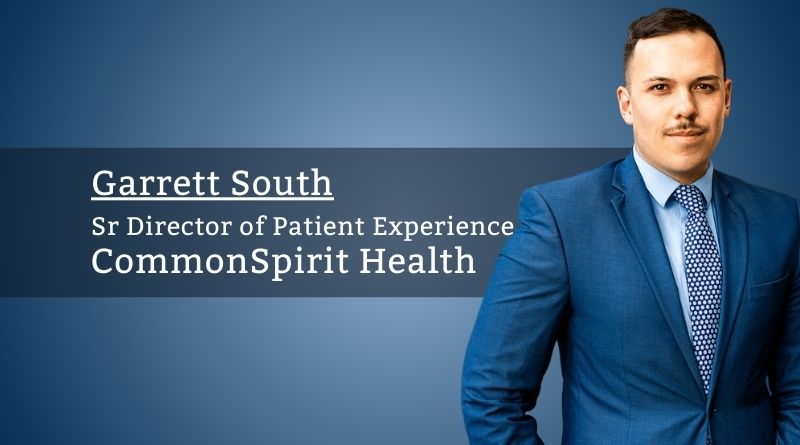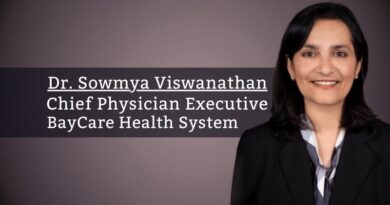The Evolution of Patient Experience: Where We’ve Been and Where We’re Headed
By Garrett South, Sr Director of Patient Experience, CommonSpirit Health
Redefining Patient Experience Today
When we talk about patient experience today, we’re talking about the comprehensive journey a patient undergoes in healthcare—not just the clinical care but the entire journey. It’s about how easy it is for patients to access services, the support they receive when they’re scared or confused, and how respected they feel in a system that often feels overwhelming. A lot has changed in the last few years, and rightly so.
We’ve shifted from a focus on patient satisfaction to genuine engagement. This is about moving beyond the transactional. In the past, we were focused on checkboxes—‘Did the patient get what they needed?’ Now, we’re asking, ‘How did we make the patient feel?’ At Dignity Health – California Hospital Medical Center, we’ve leaned into this shift, making health equity and a sense of belonging the bedrock of our patient experience strategy. As a hospital that serves diverse and underserved communities, this approach is not just strategic; it’s essential.
Healthcare is about human connection; technology should enhance, not replace, the relationships we build with patients.
What’s Next: Trends That Will Shape Patient Experience
Looking ahead, the landscape of patient experience will be shaped by a few key trends. First, digital transformation is here to stay. The rise of telemedicine and digital health platforms is game-changing, especially for populations with limited access to care. These platforms offer a way to stay connected with patients long after they leave the hospital, ensuring continuity of care.
Beyond technology, there’s a growing recognition of healthcare consumerism. Today’s patients expect seamless interactions, much like those they experience when using an app to book a ride or order groceries. They’re looking for a healthcare journey that’s intuitive, easy to navigate, and designed with them in mind. This shift is prompting all of us to rethink how we deliver care.
The Challenges: Breaking Down Silos to Improve Experience
It’s one thing to say you’re going to prioritize patient experience; it’s another to do it well. The biggest challenge healthcare organizations face is often internal—breaking down the silos that exist between departments. We’ve seen firsthand how important it is to get everyone aligned with a shared vision. We’re not just investing in new technology, but making sure that every person in the organization understands their role in improving patient care.
Another challenge lies in balancing high-tech solutions with high-touch care. Technology can’t replace human connection—it should enhance it. That’s why we’ve focused so much on the well-being of our caregivers. If our people aren’t taken care of, they can’t deliver compassionate care. In an environment where resources can be stretched thin, the focus on caregiver support becomes even more crucial.
Our Approach: Leadership’s Role in Driving Experience
At the leadership level, we’ve embedded patient experience into everything we do. It’s a cornerstone of our FY2025 strategy, which emphasizes creating a sense of connection and belonging to both patients and staff. This isn’t just lip service; we’ve integrated patient experience metrics into performance reviews for leaders across the board, holding everyone accountable.
A strategy that’s been incredibly impactful is using cross-functional committees that bring clinical and non-clinical teams together. This collaboration fosters real-time problem-solving and continuous improvement. It ensures that patient experience isn’t just an afterthought but a driving force behind every decision.
Technology’s Impact: Digital Health and AI
Digital health technologies are already revolutionizing the way patients interact with care. Telemedicine, patient portals, and ERAdvisor (which we’ve integrated into our emergency department) have transformed the patient journey. Patients now have more control —they can manage appointments, receive real-time updates, and communicate directly with their care teams. This shift is a game-changer, reducing anxiety and improving engagement.
Artificial intelligence (AI) and machine learning (ML) are the next frontier. These tools can predict patient needs and outcomes by analyzing data across platforms. Imagine AI helping our teams anticipate patient flow in the ER or personalize treatment plans based on a patient’s history. The potential is incredible, but again, it’s about making sure we don’t lose the human touch in the process.
Lessons Learned: Small Changes, Big Impact
One of the biggest takeaways from our journey is that small changes can lead to big wins. Leader Rounding, for example, went from the 24th to the 79th percentile after we implemented a few targeted adjustments. It’s about consistency and intention. When we show up for patients—and for each other—it creates a ripple effect.
We’ve also learned the importance of celebrating the wins. This year, we received the NRC Health Consumer Loyalty Award, the HRC LGBTQ Leader Designation, and were named Best Hospital of Downtown by DowntownNews. These accolades are a testament to the hard work of our teams, and they remind us that we’re on the right path.
Looking Ahead: Where Patient Experience is Headed
The future of patient experience will be shaped by a blend of innovation and empathy. Technology will play a huge role, but we must remember that healthcare is about human connection. Our job as leaders is to ensure that tech enhances, not replaces, the relationships we build with patients.
If we stay focused on the patient—keeping their needs and feelings at the center of everything we do—we can create a healthcare system that meets patients where they are, while also fostering a sense of belonging for everyone involved.



